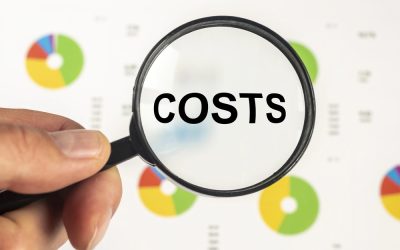 One of the problems with financial reporting is that the information is out of date as soon as you get it. It’s like delivering out of code beer to an account; the numbers are stale.
One of the problems with financial reporting is that the information is out of date as soon as you get it. It’s like delivering out of code beer to an account; the numbers are stale.
The faster you can produce your financial statements, the faster you can read them and implement the lessons they have to teach. The financial statements are the numerical representation of the company’s performance. The financials show what is working, what isn’t, and provide a road map to attack problems and take advantage of opportunities.
So, why do you accept financial information that is out of code as soon as it’s received?
The Daily P&L is an idea that we implemented in our company. It speeds up the financial reporting process and shows how the company is doing in real time. The accountants don’t like this concept because the numbers are an estimate instead of the fully baked figures that take weeks after month end to complete. But for business owners and managers, the benefit of receiving current, actionable financial information far outweighs the potential risk of providing estimates.
This article will present a game plan to create a Daily P&L in your distribution business. Money loves speed; the Daily P&L is faster than a speeding bullet.
The Daily P&L Game Plan
- Change is Hard: Overcome the Resistance
- Key elements of the Daily P&L
- How to Create the Daily P&L
- Share the Numbers and Take Action
Overcome the Resistance
You will hear many reasons why you can’t produce financial statements on a daily basis. There were also many reasons why we couldn’t put a man on the moon, but we did that.
The first step is to overcome the resistance from your accounting team, and implement a process that allows you to get real time numbers. You’ll hear a dozen reasons why it can’t be done, but you have one compelling reason why it has to be done: you need the information. Your business depends on it and jobs depend on it.
Real time numbers provide a snapshot of the financial position of the company. The information is produced and available quickly so you can act on it while the information is still relevant, and the trail is still fresh. We produce sales reports every day, why not a set of financial statements?
Resistance Points
For many distributors, financial statements take a long time to prepare for several reasons:
- We try to make them 100% accurate. We wait for invoices to come in, recording actual expenses instead of estimates. Bank statements need to be received and reconciled, and payroll accruals need to be recorded.
- There are delays in receiving required reports from other departments which we deem crucial to completing an accurate set of financial statements
- The biggest reason of all – because this is the way we’ve always done it.
At best, the financial statements represent an estimate of your company results. Even the reports that you receive two weeks after the month closes contain a myriad of estimates. We might as well speed up the process, use good estimates, and produce a Daily P&L to show how we are doing in real time.
Key Elements of the Daily P&L
The traditional P&L is a big report, running several pages in length. There are lots of details that break down sales, cost of sales, and expenses by department and category. While there is great information in these big reports, the information is out dated. Besides, few people are actually looking at all the information anyway.
The Daily P&L is short and sweet. It covers only the key information that you need to see. Just one number for each item, each day:
- Sales
- Gross Profit
- Operating expenses
- Net Income
Sales. Everyone knows the sales number. The first thing I do in the morning is run the sales reports – what’s on the trucks today? How does this sales day compare to the same sales day last year? How are we trending this month vs. the plan and vs. the same month last year? I spend a lot of time reviewing the sales number, and I know you do, too!
Gross Profit. In my experience, very few people know the gross profit number, or pay any attention to it. To improve your company results this needs to change. Teach your people to understand and respect the mighty power of gross profit. It will literally transform your bottom line. Next to net profit, gross profit is the most important number on your income statement (and your Daily P&L).
Gross profit can be presented as both a percentage (GP %) and a dollar figure (GP $). This is similar to sales, where we present sales as a % increase or decrease over the prior month or year. Most route accounting systems make it easy to run a gross profit report for any time period. Run it for the Daily P&L and make it part of your daily routine. Looking at sales and gross profit will be a real eye opener.
Operating expenses. These expenses include salaries, benefits, utilities, and lease payments. If you study the numbers, what you will find is that these numbers are very consistent and predictable from month to month. As a result, you can make a reasonably accurate estimate of your operating expenses to include in your Daily P&L.
Net Income. The bottom line. This is simply the difference between gross profit and operating expenses. Subtract the two and you have Net Income.
Create the Daily P&L
Now that you have a handle on the key elements of the Daily P&L it’s time to put bring them together on one report. Below is an example of how we put this information together in our company:
| Daily P&L | ||||||
| Week of 6/5/17 | ||||||
| Monday | Tuesday | Wednesday | Thursday | Friday | Total | |
| Sales | $ 37,000 | $ 56,000 | $ 93,000 | |||
| Gross Profit | $ 9,213 | $ 13,888 | $ 23,101 | |||
| GP % | 24.9% | 24.8% | ||||
| OPEX | $ 7,800 | $ 7,800 | $ 15,600 | |||
| Net Income | $ 1,413 | $ 6,088 | $ – | $ – | $ – | $ 7,501 |
This is a simple Excel spreadsheet (fancy colors optional). The sales, gross profit and operating expense numbers are entered into the spreadsheet, and the information is then emailed to those who need to know. At a minimum, this will be the owners, executives and department managers in your company.
I find it helpful to have one point person responsible to pull together the needed information, and then distribute the Daily P&L to the team. However, to engage your managers, different members of your team should send the information to the point person.
For example, the sales manager should provide the sales number, and the accounting manager should provide the gross profit estimate. The operating expense should come from the department team leaders (sales, warehouse, delivery, etc.). This way, may people are involved in creating the Daily P&L, not just the bean counters. Instruction on where the information comes from is outlined below.
Sales. Build a daily sales report (you probably have 29 different sales reports already) and use this to capture the day’s sales to enter into the Daily P&L sheet. Your sales manager runs the number anyway; have them send the information to the point person to include on the Daily P&L.
Gross profit. In your route accounting software, build a gross profit report (please tell me you have at least one GP report). Here again, you’ll grab the gross profit for the day and enter into the spreadsheet. Ideally, your gross profit will capture all the appropriate data – correct pricing, product costs and supplier depletion allowances (bill-backs). If this information isn’t 100% correct, don’t sweat it, we are looking for a good estimate so we can get the Daily P&L done and communicated ASAP. The GP report may be run by your accounting manager or your inventory manager and sent to the point person for the Daily P&L.
Operating Expense (OPEX). For this number, use your planned spending with input from your department heads. For example, if your budget calls for total monthly OPEX of $156,000, use this as a starting point for your Daily P&L. Take the $156,000, divide it by the number of working days in the month (20 days, in this example) and put the resulting $7,800 daily OPEX in your P&L.
Managers tend to get a little twitchy about the OPEX estimate. How accurate is this number? Am I really producing a good estimate here? How do I know if this report is missing key information?
To these questions and concerns, I answer this: the Daily P&L is intended to be simple, but not simplistic. If there is a high degree of variability in your operating expenses (or if you don’t do a good job staying on budget) you’ll need to spend time to get a clearer picture of your expenses.
For example, if your department team leaders have budget responsibility, put a communication plan in place whereby they notify you of expense deviations as they happen. If the operating budget for the month is $156,000, but all of your department managers are projecting a 10% over-budget situation, then adjust the OPEX number on your Daily P&L.
Get as sophisticated as needed with OPEX projections. However, don’t lose sight of the goal to get the Daily P&L done and distributed ASAP to those who need to know. 95% accurate and done today is much better than 98% accurate and done three weeks from now.
Net Income. This is just a calculation in the spreadsheet: Gross profit minus OPEX = Net Income.
Share the Information and Take Action
One of the biggest problems with financial reporting is that the information is out of date as soon as you get it. The Daily P&L solves this problem.
The process of building the Daily P&L should prompt questions and spark communication throughout your organization. The timeliness of the information will allow you to take action quickly to solve small problems before they become big ones. The insights into your business will allow you to take advantage of opportunities to improve operations and the company bottom line. In short, the Daily P&L can transform the way you see your business.
There is an old saying that knowledge without action is useless. So, too is the Daily P&L useless unless you take action on the information it provides. Build the Daily P&L, engage your team and take action. The Daily P&L will show you where to improve; it’s up to you to implement the changes to make it happen.





